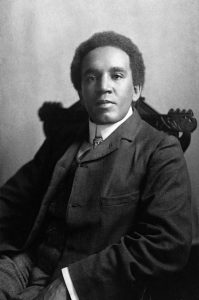The way white people describing Black Americans and their music never ceases to shock me, especially from an older source like a 1920s newspaper article. In the specific article I will be referring to, the title is “Dancers Need Substitute for U.S. Jazz”. At first glance, I thought it was a flier notifying its readers that dancers for a show were needed, but this is not at all what the article dives into.
It was hard to tell where this “article” came from because there was no author stated and all it says at the top is “Prague, Czech Home Service”. I was unsure if this was a newspaper or a subsection of a paper. This was extra confusing because the topic was on American music but there were European countries in it. However, after a closer look, I realized that it was a transcribed message from, likely, a radio show.
The very first “ear” catching statement made by the narrator was quoted from a musical composer “many people are unable to realize the difference between jazz and dance music”(Par. 1) The narrator goes on to share their own thoughts on this statement. It is a bit hard to deduce who the narrator is and anything of their background, but it seems like they have only heard the white american perspective. Comments such as “Old Negro folk songs were only sung. Their rhythm originated from the rhythm of work. So-called modern jazz has no effect on feelings, but only on the lowest primitive urges.”, and “American owners of slaves and plantations”(Par. 3-4). This second comment alone lets me know that this narrator didn’t view these people as enslavers. This to me says that they don’t understand the trauma and suffering of slavery, therefore they don’t understand the meaning behind slave songs. Slave songs also aren’t jazz. They influenced jazz, but the reverse is not true.
DANCERS NEED SUBSTITUTE FOR U.S. JAZZ. (1954, March 17) Prague, Czech Home Service. Translated in DAILY REPORT. FOREIGN RADIO BROADCASTS (Publication no. FBIS-FRB-54-053, published 1954, March 18), HH2-HH3. Available from Readex: American Race Relations: Global Perspectives, 1941-1996: https://infoweb-newsbank-com.ezproxy.stolaf.edu/apps/readex/doc?p=TOPRACE&docref=image/v2%3A12895BC6AA32DB40%40FBISX-131CEE8714B10AF8%402434820-131CEE95A3BF5E00%4036-131CEE9605E97168%40DANCERS%2BNEED%2BSUBSTITUTE%2BFOR%2BU.S.%2BJAZZ.


